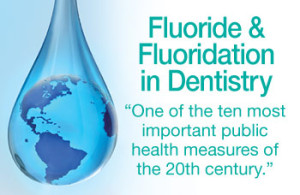
Image courtesy of Deardoctor.com
In 1999 the CDC listed “Ten Great Public Health Achievements of the 20th Centuryâ€. Family Planning is one. Another is “Fluoridation of Drinking Water to Prevent Dental Cariesâ€.
The CDC report summarizes the science: “Fluoridation of community drinking water is a major factor responsible for the decline in dental caries (tooth decay) during the second half of the 20th century…. Although other fluoride-containing products are available, water fluoridation remains the most equitable and cost-effective method of delivering fluoride to all members of most communities, regardless of age, educational attainment, or income level.â€
Last month three well-respected Durango citizens collaborated on an op-ed for the Opinion page of the Herald. Unfortunately much of what they wrote is not well supported. I know and respect all three—but feel that they didn’t do their homework well.
The first author wrote: “The fluoride we add to Durango’s water supply is Hydrofluorosilicic Acid.†In December I asked the City’s staff what is used to fluoridate Durango’s water supply and received this answer: “Dr. Grossman: The fluoride additive utilized is Sodium Fluoride (NaF) with a finished water fluoride concentration goal of 0.70 ppm.†Message #1: ask questions.
The assertion is made that water fluoridation causes arrested brain development, ADD and ADHD, decreased IQ, autism, learning disabilities and cancer. Writer #1 states: “More than one in six children are effected [sic] by these conditions.†What are the sources for this information? Presumably one journal, “Fluoride: Quarterly Journal of the International Society for Fluoride Researchâ€. I find articles in this journal to be strongly biased—they all seem to be against fluoridation.
How can one tell if a scientific journal is reputable, since many periodicals seem to be trustworthy, but are not? First of all, look to see if articles in it are peer reviewed. If they are not, the information is less credible. I check one thing before deciding on the credibility of a medical journal: is the journal listed in the National Library of Medicine? “Fluoride†is not.
The second writer, a dentist, states “…I have never been able to distinguish which children (or adults) grew up in a fluoridated community or a non-fluoridated community.†This is not the sort of information with which to make educated decisions that affect the public’s health. Rather than just an impression, it would be more believable to have records of the rates of cavities where water is fluoridated and where it isn’t.
I admire this writer for checking with the Cochrane review on water fluoridation. These reviews are the standard for evaluation of the quality of medical knowledge. He quotes: “There is very little contemporary evidence, meeting the review’s inclusion criteria, that has evaluated the effectiveness of water fluoridation for the prevention of caries.†Message #2: the research on the effectiveness of water fluoridation is old, but still valid.
The third writer states that fluoride is “…an endocrine disruptor that is wreaking havoc with our thyroid glands….†This interests me for two reasons. The topic of endocrine disruptors is important, as there are many (especially organic) chemicals that cause subtle but serious problems. Additionally, I have taken thyroid medication for decades. I did some research to find out if there is good evidence that fluoride is an endocrine disruptor.
What I found is that, indeed, preliminary evidence suggests that fluoride may have an effect on thyroid function. Some of the information is from England, where most salt is not iodized. Fluoride may make lack of iodine (which is essential for thyroid function) worse. This supports the idea that it is healthy to use iodized salt, but doesn’t necessarily go against water fluoridation.
What is not mentioned by any of the three writers is that many of the studies showing bad effects of fluoride were done in places where the levels of water fluoride are very high. Those studies are not relevant to Durango, where the level is much lower. Message #3: read original studies to find relevance to our community.
Public health’s goal is to facilitate health for all people. My understanding is that the Durango City Council made the decision to continue with a low level of fluoride in its water supply. This was a good decision from the standpoint of public health because it will benefit those who have the greatest need—people who can least afford dental care, and who may have the poorest diets. Those who feel strongly that fluoride is bad can arrange to drink water without it.
© Richard Grossman MD, 2016